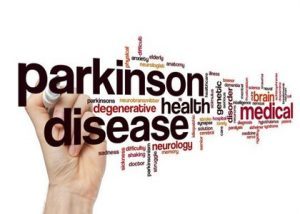- Home
- Editorial
- News
- Practice Guidelines
- Anesthesiology Guidelines
- Cancer Guidelines
- Cardiac Sciences Guidelines
- Critical Care Guidelines
- Dentistry Guidelines
- Dermatology Guidelines
- Diabetes and Endo Guidelines
- Diagnostics Guidelines
- ENT Guidelines
- Featured Practice Guidelines
- Gastroenterology Guidelines
- Geriatrics Guidelines
- Medicine Guidelines
- Nephrology Guidelines
- Neurosciences Guidelines
- Obs and Gynae Guidelines
- Ophthalmology Guidelines
- Orthopaedics Guidelines
- Paediatrics Guidelines
- Psychiatry Guidelines
- Pulmonology Guidelines
- Radiology Guidelines
- Surgery Guidelines
- Urology Guidelines
A better and easy testing method for patients with Parkinson's disease

Parkinson's disease is a neurodegenerative disorder that manifests through symptoms such as tremor, slow movements, limb rigidity and gait, and balance problems. It affects about 10 million people across the globe and in itself is not fatal, but complications from Parkinson's disease can be serious. It can take years for the disease to progress to a symptomatic state--making early detection a top priority for researchers. All diagnostic testing revolves around how a patient moves and requires the patient to walk for extensive distances and amounts of time and are discomforting.
An international team of researchers based in Saudi Arabia and Sweden have proposed a new kind of computational analysis based on less physically-demanding testing in Parkinson's disease. The research has been published in the IEEE/CAA Journal of Automatica Sinica.
"Apart from gait and balance data, the measurement of computer keystroke time series that contain information of the hold time occurring between pressing and releasing a key has been proposed for detecting early stages of Parkinson's disease," said Tuan D. Pham, paper author and professor of biomedical engineering in the Center for Medical Image Science and Visualization at Linköping University in Sweden.
"Being similar to the motivation for determining the minimum number of strides for the analysis of gait dynamics, our study was interested in answering the question if there are methods that can process very short time series and achieve good results for differentiating healthy controls from subjects with early Parkinson's disease."
The disease itself is not fatal, but complications from Parkinson's disease can be serious. It affects about 10 million people across the globe, and it can take years for the disease to progress to a symptomatic state--making early detection a top priority for researchers.
In this experiment, subjects press one or two buttons on a device such as an iPhone as fast as possible for a short period of time. Pham and the team took these data and analyzed them through fuzzy recurrence plots, which take multiple short-time series data points and translate them into a two-dimensional grey-scale image of texture. In the image, related points appear as a dense grey, with more disparate data points becoming fuzzier. The algorithm used for the fuzzy recurrence plots learns how the data points connect and can help provide differences and similarities in subject groups such as people with early Parkinson's disease and those without.
"While having a very short length, the time series is augmented with a relatively large number of feature dimensions," Pham said. "The results obtained from the fuzzy recurrence plots are encouraging for the collection of practical data recorded from participants and their usage for the classification task."
The team plans to further study the use of fuzzy recurrence plots and improve the algorithm to better determine a subject's disease state. They also plan to extend the research to study gait dynamics of patients with Parkinson's disease, Huntington's disease, and amyotrophic lateral sclerosis, also known as Lou Gehrig's disease.
IEEE/CAA Journal of Automatica Sinica
For more details click on the link: doi: 10.1109/JAS.2019.1911774

Disclaimer: This site is primarily intended for healthcare professionals. Any content/information on this website does not replace the advice of medical and/or health professionals and should not be construed as medical/diagnostic advice/endorsement or prescription. Use of this site is subject to our terms of use, privacy policy, advertisement policy. © 2020 Minerva Medical Treatment Pvt Ltd